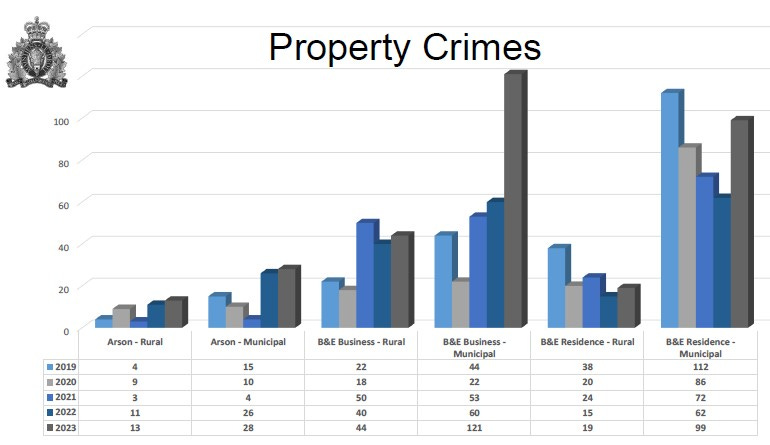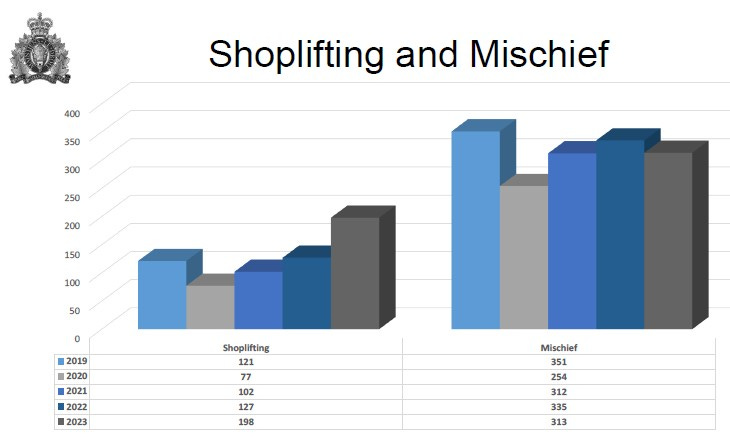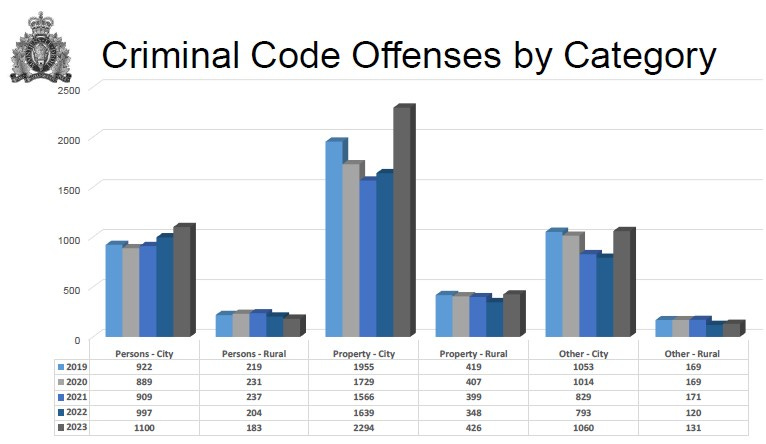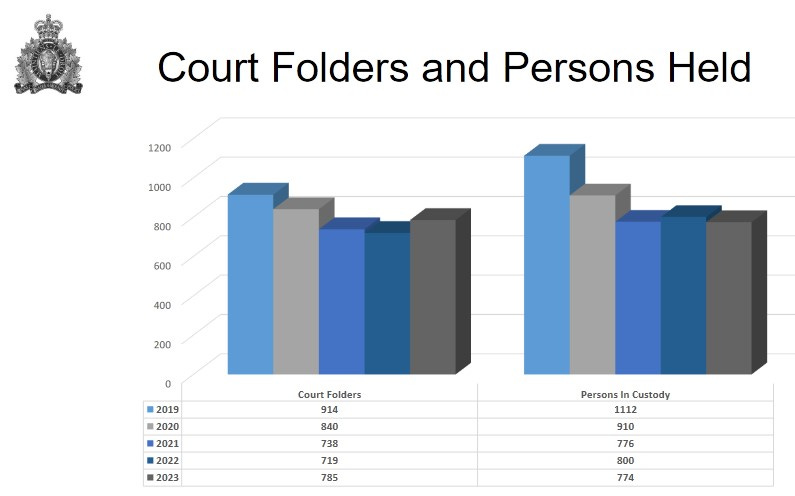Crime continues to skyrocket: Shoplifting, B&E's way up
The increase in crime that business owners in Fort St. John first noted in December 2022 hasn’t eased, despite efforts by the RCMP and groups in the community. In fact, according to statistics presented to city council on August 12, Break and Enters to businesses in the city increased 200 percent over 2022, a trend the Acting Detachment Commander, Staff Sergeant Scott Watson says is continuing.
“What we’re seeing in 2023, and it’s carried on to this year, is a very big spike in property crime,” S. Sgt Watson said. “Break and Enters of businesses has absolutely skyrocketed.”
Because most of the B&E’s occur in the downtown core, there has been concern that the rise in crime can be attributed to the homeless population. While some of Fort St. John’s homeless population is simply down on their luck, many are vulnerable people who face these challenges with mental health and addiction.
“I can’t say that the increase in the homeless population is a definitive marker for that, but in the cases where we have caught somebody and prosecuted them, they’re either someone that has substance abuse challenges, mental health issues or a combination of both,” he said.
“That being said, when you see that pile of stuff that’s outside the tents, that’s all stolen property,” Watson said.
Unfortunately, there’s often no way to identify who the stolen property belongs to. “We know it’s stolen property, but we don’t know where it’s come from.”
It’s not just the B&E’s of businesses that’s increased in the past year. The stats show that shoplifting is on the rise throughout the city. Unlike the break and enters, shoplifting is something that’s happening daily, and the thieves are getting bolder.
“The worst thing that ever happened to shoplifting is these self-check-out things,” Watson said. “We’re having people stealing from grocery stores every day. They’ve gone from a few small items to whole carts.”
Thefts from Wal-Mart have been particularly challenging for the police. The thieves aren’t going out through the front doors where there’s staff, they’re taking carts full of groceries out an emergency exit.
So, the RCMP taken to thinking, and working outside the box in an effort to thwart would-be shoplifters. Now, says Watson, if a member has reports to write, instead of doing them back at the detachment, they’ll sit in their vehicle outside the emergency exits at Wal-Mart.
“Twice now they’ve interdicted thefts, just by happening to be there.”
Other ways that the police have changed things up to deal with increased crime is to change the focus of the plainclothes units. Traditionally, the detachment has a three-member General Investigations Unit, which investigates serious crimes, a drug unit and a crime reduction unit. These units, particularly the drug and crime reduction units are the Street Enforcement Team, Watson said.
Since the refocussing, the team has focussed their enforcement around the Salvation Army housing, and worked with the problem residences on 112th Avenue, Watson said, noting that they wouldn’t have gotten to Civil Forfeiture without their actions on that property.
“We are seeing some successes.”
“Obviously, when we’re talking about property crime being as high as it is, it’s a multi-faceted problem,” he said. “I don’t really see it getting better in the next little while.”
Part of the problem is that once someone is apprehended, they’re making bail right away. During Covid, the government, without consulting the RCMP, switched to a virtual bail system. This means that people in custody don’t need to be taken to court for a bail hearing, but instead have a video system in the cells, with a judge that oftentimes, is not familiar with this region.
“It’s created a situation where it’s not always the local Crown Counsel that is doing the charge assessment of approval. We lose the local context,” Watson said. “The local Crown Counsel may know the person and their record, but the person on the other end, in Vancouver, they have no idea.”
In the bail comments, the police have to paint a picture and explain why a particular incident is a problem in this community, and why this person needs to be held in custody.
“Not as many offenders are being held, and it shows. We have prolific property offenders, and when they’re held, even temporarily, we see a drop in crime. We’re not seeing that as much anymore,” said Watson.
Crown Counsel is also facing pressure, Watson said. There’s half the number of Crown Counsels and sheriffs as there needs to be, a shortage which compounds issues for everyone. Without sheriffs, offenders can’t be transported to the regional facility in Prince George, and are instead being held in local jail cells, being looked after by local RCMP members. This is turn, takes the police away from their regular duties in the community.
“The volume we’re providing is not going down, but their ability to deal with the numbers is not the same as it used to be,” he said.
“There’s challenges in the entire system that need fixing.”







